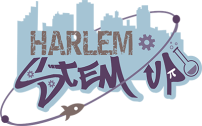When parents hear “STEM learning,” many picture robotics clubs, coding classes, or lab kits. But one of the most powerful STEM classrooms is right in your own home. From cooking dinner to bedtime stories, your daily routines are already giving your child essential skills for science, technology, engineering, and math—often without you even realizing it.
Family Routines: The Hidden STEM Classroom
A growing body of research shows that predictable routines—like shared meals, chores, and bedtime rituals—aren’t just comforting. They’re deeply beneficial to brain development. One study from the University of Albany found that children who follow consistent routines have fewer attention problems and stronger school readiness skills. Other studies have confirmed that family routines support emotional regulation and academic performance.
These findings aren’t just about structure—they’re about opportunity. Inside the ordinary, there’s room for inquiry, experimentation, observation, and reasoning. In other words, STEM thinking is already woven into the rhythm of family life.
How Everyday Routines Become STEM Moments
STEM doesn’t require a lesson plan. It just takes intention.
Take dinner time, for example. Measuring ingredients, adjusting servings, and following a recipe builds math skills and introduces early chemistry. When your child notices that water boils faster with a lid or wonders why pasta sticks together, they’re not just helping, they’re exploring scientific cause and effect. And research backs it up: food-based learning has been shown to improve both math scores and attitudes toward learning math and science.
Then there’s the bedtime routine, where questions like “why do stars twinkle?” or “what happens next in the story?” quietly spark logical thinking, prediction, and categorization. These “what if” conversations develop early systems thinking, the kind of mental flexibility scientists rely on.
Even errands and short walks create learning opportunities. Estimating travel time, counting buses, noticing weather changes are the kinds of observations that lay the groundwork for hypothesis-building and real-world data collection. One study found that unstructured, child-led time like this improves planning skills and executive function, both of which are crucial for future academic success.
Chores, too, are more than life skills. Sorting laundry teaches classification and pattern recognition. Helping clean or organize a shared space demands sequencing and spatial reasoning. Fixing a squeaky hinge or assembling furniture invites mechanical problem-solving. These tasks turn everyday responsibility into early engineering.
Even downtime matters. Allowing movement, rest, and unstructured creativity gives kids the space to process what they’ve learned. One study shows that quick physical “brain breaks” can enhance memory and cognitive performance. Letting children build forts, draw maps, or just daydream is not off-task—it’s essential to their ability to think critically and creatively.
Of course, structured activities can help, too. If your family wants a new challenge, websites like STEAM Powered Family and NISE Net’s Outside Toolkit offer simple, low-cost projects that turn curiosity into hands-on learning. But those projects work best when they build on the confidence and mindset that’s already growing through everyday routines.
Real Results: Why It Matters
The everyday STEM moments you create at home matter more than any app, gadget, or subscription box. Research consistently shows that children learn best when they can connect new ideas to real-life experiences—and those experiences often happen in kitchens, on sidewalks, or during bedtime stories. These moments don’t require formal instruction, just adults who notice, invite, and celebrate curiosity.
Final Thought: Your Routines, Their Futures
You don’t need to create a science lab in your living room to raise a STEM thinker. You just need to stay present and curious alongside your child. Your kitchen, your sidewalk, your bedtime routine are all spaces where STEM happens.
So the next time your child asks why the light turns red, wants to help fold the laundry, or builds a ramp for a toy car, lean into it. You’re not just parenting. You’re teaching persistence, logic, and wonder.
Let’s celebrate the learning already happening at home and help our children see that STEM isn’t a destination. It’s a way of moving through the world, one question, task, and routine at a time.



